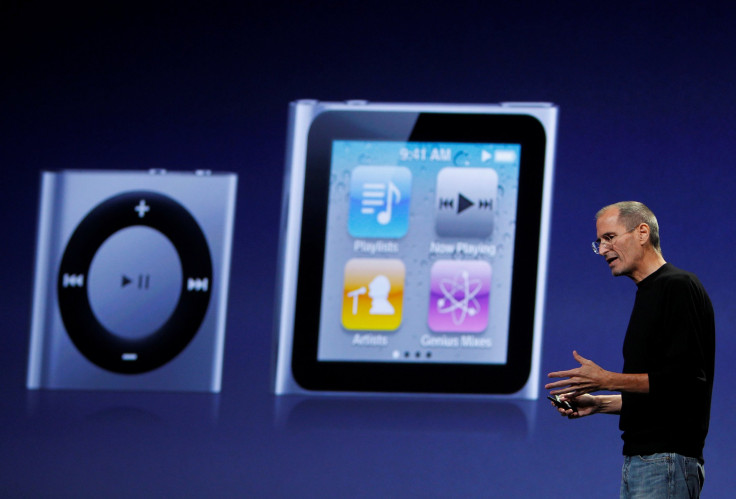Remembering The iPod As Apple’s Iconic MP3 Player Is Phased Out

When I bought my first Walkman as a teenager in the late 1980s, it was a great development from carrying a large “boombox” stereo on my shoulders. Anyone who wasn’t alive at the time won’t understand just how liberating it was to suddenly be able listen to music while walking, jogging or traveling, or even just in different rooms of the house.
As other formats arrived, I kept returning to the Walkman because it was so much more reliable than portable CD players and more affordable than MiniDisc players. I was as in love with the device as Chris Pratt’s character in the film Guardians of the Galaxy, whose space adventures are always accompanied by a soundtrack from his trusty Walkman.
Then, in 2001, came the iPod, and everything changed. Like many others, I finally ditched my Walkman in favour of the device that made MP3 players mainstream. The iPod was a near-instant success and helped to relaunch Apple on a trajectory to becoming the world’s most valuable public company.
But now, 16 years later, the iPod as we knew it is no more. Apple recently announced it was ending production of the iPod Nano and Shuffle, meaning the company will no longer produce dedicated MP3 players. (The remaining iPod Touch is essentially a smartphone without the ability to make calls directly from mobile networks.)
This marks the end of a genuine design classic that can teach us a huge amount about how to make a successful product. But given that music-playing smartphones and the iPhone-mimicking Touch have been popular for a good ten years now, perhaps the most interesting lesson is in why Apple’s MP3 players were around for so long.
Focus on simplicity
The iPod, like many Apple products, was famous for its appearance, which followed one of company founder Steve Jobs’s key principles. “Focus on simplicity,” he once said. “Simple can be harder than complex: you have to work hard to get your thinking clean to make it simple.”
The classic features of the iPod were its simple rectangular display and iconic circular control panel on a plain white body. These have been compared to the design of the 1958 Braun T3 transistor pocket radio created by Dieter Rams. They helped make the iPod appear timeless while also turning it into a fashion statement for those who wanted something elegant and different.
But Jobs also made another crucial and inspirational point: “Design is not just what it looks like and feels like. Design is how it works.” The iPod functioned like most other MP3 players on the market but had a unique and much simpler navigation system. The innovative scroll wheel removed the frustrating need to spend a long time clicking buttons to find each song.
The iPod also had other practicalities. Its large memory meant most people could save all their music to the device. Integrating it with the iTunes software made importing music a simple task, and making it compatible with PCs hugely expanded the market of potential customers.
The iPod story provides a good lesson to every product designer to focus on the experience of users, the purpose of the design and to have a clear vision combined with simplicity.
Final stage
It also neatly illustrates the process of a product lifecycle. Every product has four life stages. Introduction, when the new product arrives to market. Growth, when consumers start to buy more and more of the product. Maturity, when product sales become constant and reach steady state. And decline, which is when the technology becomes obsolete and replaced by products with better technology and more features. Obsolescence is why some products are discontinued even when many customers love them.
The iPod Nano and Shuffle found themselves competing with smartphone technology that offers added functionality and flexibility. When I recently asked my ten-year-old son if he would want an iPod Nano, he explained his iPod Touch lets him play games, watch YouTube and talk to his friends over the internet, as well as listen to music. And most adults will simply use their smartphones for all these functions.
Apple also had an incentive to discontinue the Nano and Shuffle because the Touch is manufactured using similar components and techniques to the iPhone and so benefits from lower costs thanks to economies of scale. Selling fewer Nanos and Shuffles makes their components and assembly more expensive.
So why, when Apple was making iPhones and touchscreen iPods for the past decade, did the Nano and Shuffle last so long? Apple had loyal customers who considered having the new version of the iPod product a fashion statement. By continually innovating and adding new features, colors and design options through several generations, the company was able to keep demand for the devices alive.
But we have now reached a stage now where the various iPhone and iPod Touch models provide such a wide range of functionality and flexibility through a standard, familiar software (and at a range of prices) to cover almost everything that’s needed by Apple customers. This has finally made the Nano and Shuffle redundant.
Amin Al-Habaibeh, Professor of Intelligent Engineering Systems, Nottingham Trent University
This article was originally published on The Conversation. Read the original article.






















